Autumn colors in Franzensfeste, South Tyrol.
Category: Monday Magazine
Though we are an aggregator blog (providing links to content elsewhere) on all other days, on Mondays we have only original writing by our editors and guest columnists. Each of us writes on any subject we wish, and the length of articles generally varies between 1000 and 2500 words. Our writers are free to express their own opinions and we do not censor them in any way. Sometimes we agree with them and sometimes we don’t.Below you will find links to all our past Monday columns, in alphabetical order by last name of the author. Within each columnist’s listing, the entries are mostly in reverse-chronological order (most recent first).
On the Road: Back Home
by Bill Murray
In spring the pandemic lurked. Boris Johnson was Ukraine’s new best friend, Russia’s domination of Ukraine appeared imminent and the UK basked in the queen’s platinum jubilee. I’ve been away since spring. Have I missed anything?
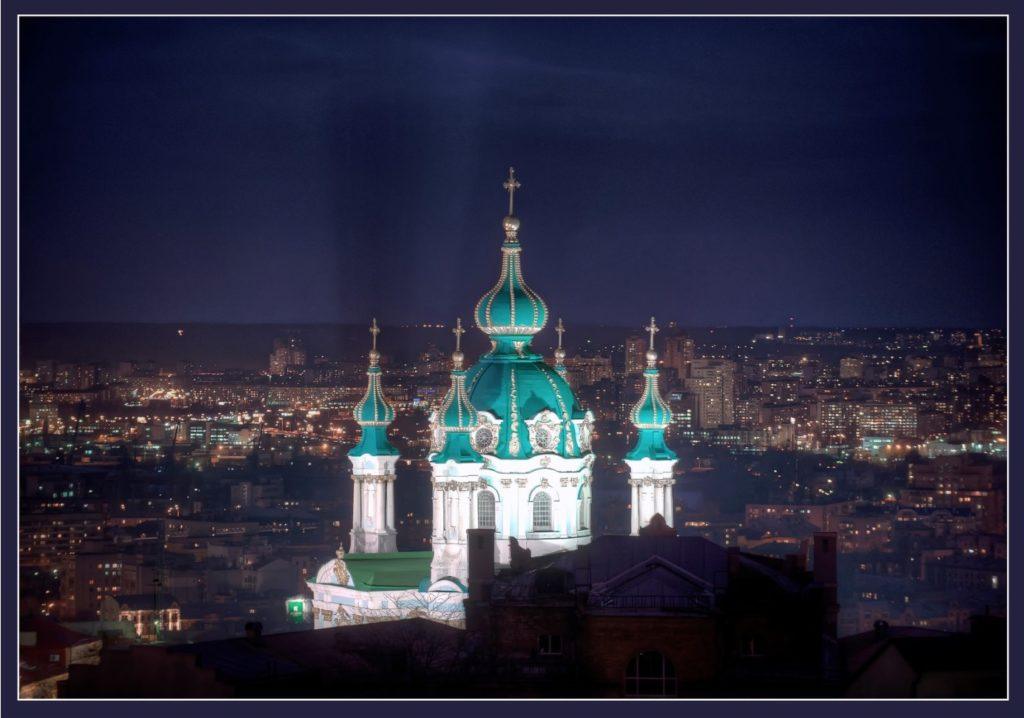
The war continues. Many who caution they can’t get inside Vladimir Putin’s head proclaim from in there that his scheme is to split and outlast a freezing western alliance this winter. We operate from that premise this fall, while minding an added pinch of Kremlin nuclear horseplay.
Putin must now fulminate over his mobilization. Timothy Snyder thinks this war was meant to be played out as a Russian TV event “about a faraway place.” But as the birches fade in Moscow, the fight creeps ever farther into the Motherland.
A month ago I was convinced mobilization wasn’t in the cards, because by the time call-ups got even the most basic training it would be that muddy time of year when the weather constrains fighting vehicles to the roads and the great European plain becomes a great big mess.
So to hell with basic training.
Novaya Gazeta Europe, now operating from Riga, reports that a “hidden article of Russia’s mobilisation order allows the Defence Ministry to draft up to one million reservists into the army,” which may or may not be Putin’s intent. But finer legal points have a distinctly irrelevant feel now, as Commander Putin appears to be personally running the war these days. Read more »
A Brief Overview of Some Words I Can’t Stand
by Derek Neal
 There are certain words that seem to take on a life of their own, words that spread imperceptibly, like a virus, replicating below the level of consciousness, latent in our environment and culture, until suddenly the word is everywhere, and we are afflicted with it. We may even use these words ourselves: we struggle to find the right phrase, the true word to capture our intention, and these words come to us unbidden, floating into our minds from somewhere out there, and we speak the word without understanding what we really mean, but we see understanding and acknowledgement in the face of our interlocutor, and we know we have hit upon the correct utterance that will mark us as one who belongs.
There are certain words that seem to take on a life of their own, words that spread imperceptibly, like a virus, replicating below the level of consciousness, latent in our environment and culture, until suddenly the word is everywhere, and we are afflicted with it. We may even use these words ourselves: we struggle to find the right phrase, the true word to capture our intention, and these words come to us unbidden, floating into our minds from somewhere out there, and we speak the word without understanding what we really mean, but we see understanding and acknowledgement in the face of our interlocutor, and we know we have hit upon the correct utterance that will mark us as one who belongs.
Journey
Here are some uses of the word “journey” that I’ve heard or read recently: faith journey, personal development journey, teeth journey, skincare journey, healing journey, leadership journey, finance journey, mental health journey, breast cancer journey, fertility journey, musical journey, immigration journey, medical journey, weight loss journey, pregnancy journey. The first thing we notice about these “journeys” is their combination with another word, increasingly a noun. It seems to me that the use of journey used to be exclusively about physical travel from one place to another (journey to the stars, journey to the center of the earth), or that an adjective would be used to describe a journey (harrowing journey, difficult journey), but now nouns are often used to describe a type of journey, which enables us to turn any sort of experience into a narrative story. Just now, when attempting to pay my credit card bill, I was told that my bank could help me on my “credit journey.” The word “journey” acts like a spell—once it is cast, it performs a sort of magic, turning something without order or structure into something that we can trust will turn out well, because it’s about the journey, not the destination. Read more »
Monday, October 10, 2022
The Gendered Ape, Essay 5: How Natural is LGBTQ+ Diversity?
Editor’s Note: Frans de Waal’s new book, Different: Gender Through the Eyes of a Primatologist, has generated some controversy and misunderstanding. He will address these issues in a series of short essays which will be published at 3QD and can all be seen in one place here. More comments on these essays can also be seen at Frans de Waal’s Facebook page.
by Frans de Waal

Florida Senator Rick Scott recently declared that “Men are men, women are women,” adding “we believe in science.” He was talking about transgender athletes.
I wish the senator did believe in science, though, because to reduce the gender palette to just two colors with nothing in between hardly works for biological sex and even less for gender expression and identity. It’s an outdated view.
The social roles of men and women are surrounded by persistent myths, often accompanied by the term “natural” as a stamp of approval and “unnatural” for patterns that we condemn. Most natural/unnatural distinctions have little grounding in biology, however. This is because biology is much more flexible than people assume. In the same way that no two trees of the same species are identical, nature is marked by high individual variability. Variability is what evolution works with. Since every individual comes with a unique genetic make-up, we can’t expect them to show the same sexual orientation and gender expression.
As American sexologist Milton Diamond is fond of putting it: “Nature loves variety, even though society hates it.” Read more »
Monday Poem
“lacrimae rerum, “ (the tears of things)
…………………………………. —Virgil
Everything Cries
steel’s tears are rust,
trees weep tears of falling leaves,
clouds weep and mourn their loss
sacrificing their billows to the earth as rain,
the earth weeps its carbon into sky,
the sun weeps its energy into earth
and will die someday of the loss,
even stones weep, sobbing their very selves
by force of wind and rain into talus slopes and sand,
their hard tears roll down a mountain’s breast,
on cool mornings rivers weep their mists into atmosphere
joining sun’s tears in a symphony of sight,
the shifting colors of tears, and my eyes well up,
a spontaneous flood comes and joins with
all the salty tears of things
Jim Culleny
10/8/22
Second Monday In October: The Legitimacy Crisis
by Michael Liss
Simply because people disagree with an opinion is not a basis for questioning the legitimacy of the court. —Chief Justice John Roberts

Ah, if only it were that simple. It’s not, so fasten your seatbelt because the men and women in black are back.
First, the good news. The Court welcomed its newest member in Justice Ketanji Brown Jackson, and the rookie can play. She acquitted herself quite well in her first oral argument in Merrill v. Milligan. Justice Jackson joins Justices Kagan and Sotomayor in the “Lost Battalion” of Liberals, but there is every reason to think she can make her mark.
Now to the bad: Regrettably, it must be noted that SCOTUS is back in session, and no good can come from this. Having wreaked havoc across a broad spectrum last term, Justices Thomas, Alito, Gorsuch, Kavanaugh, and Barrett are expected to continue to gorge themselves. To paraphrase Sir Edward Grey on the eve of World War I, “The lamps are going out on our rights. We shall not see them again.” Read more »
What Entanglement Doesn’t Imply
by David Kordahl

Every October, I try to carve out a little time to enjoy Nobel Season. This past week marked the climax of the last year’s iteration, with the winners of the various Nobel Prizes announced on successive days of the week. I had fun following the picks, and learning a bit about new things in the fields I don’t follow closely—which, frankly, is most of them.
Physics, however, was a different story. The physics Nobelists this year were familiar to me and most other physicists, seemingly obvious choices, if not exactly household names. Alain Aspect, John Clauser, and Anton Zeilinger have become standard characters in the physics lore of the past few decades. Their stories have even bled out into the wider culture. In Les Particules élémentaires, the 1998 novel by Michel Houellebecq, Aspect’s experiments are positioned as part of a “metaphysical mutation” comparable only to the birth of Christianity and the rise of science itself.
Well, as one might say of many grand claims…sounds important, if true. Here, I’ll be expressing my doubts about a few articles of common faith. Read more »
Perceptions
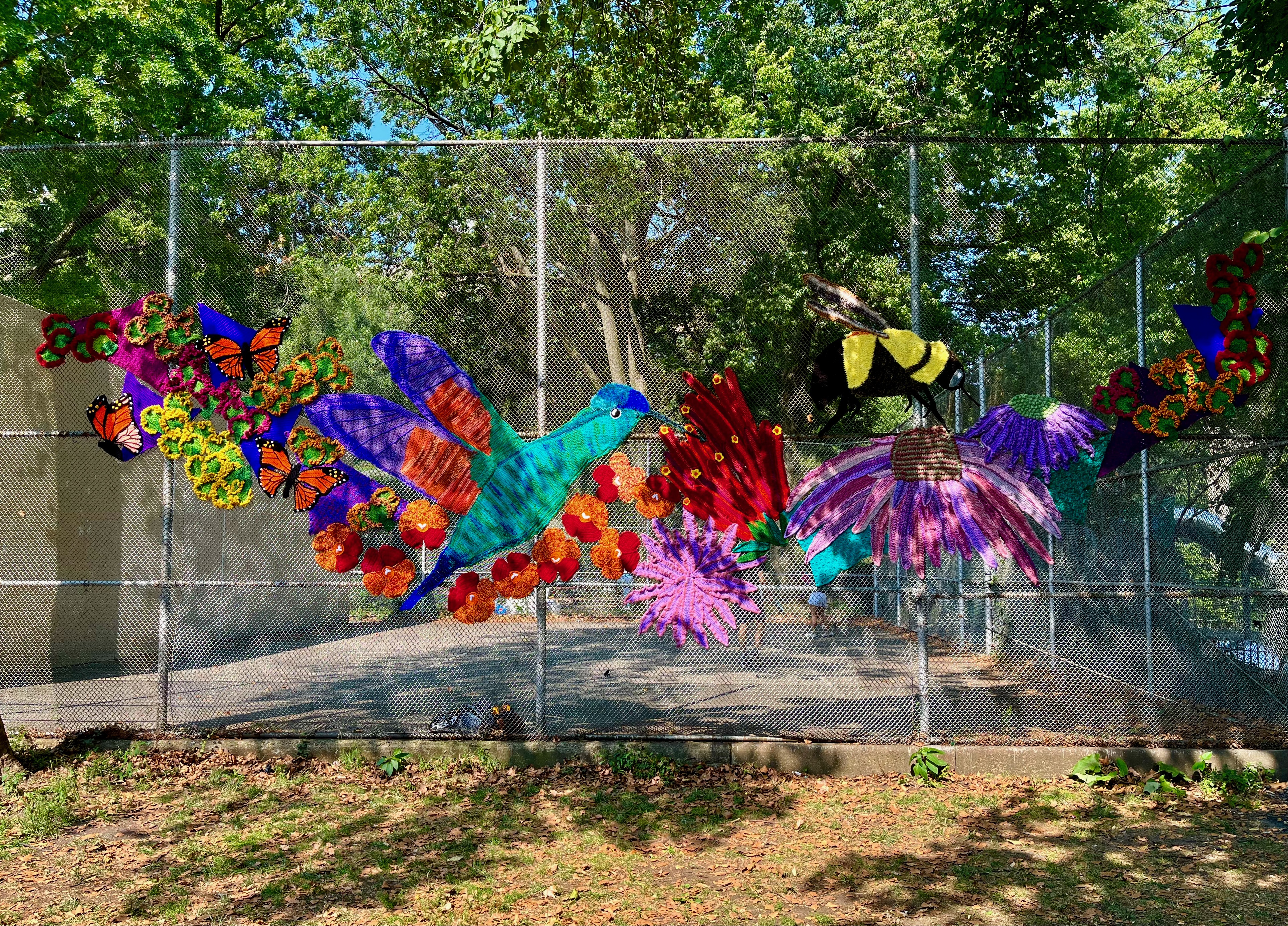 Naomi Lawrence. Tierra Frágil, 2022.
Naomi Lawrence. Tierra Frágil, 2022.
Acrylic yarn and zip ties.
Photograph by Sughra Raza in Morningside Park, Harlem, NY. September, 2022.
More here.
Do You Want to Die with Me?
by Akim Reinhardt
 Come die with me.
Come die with me.
I don’t literally mean die. Or with me. Or want.
Do you ____ to ___ with another person/persons or by yourself?
Are there any verbs you’d like to cast about as you sit alone beneath a budding tree, or amid the carnage of rampaging armies? I’m just asking. Not that death is an option.
Death is just an illusion, created by kindly, ancient priests from lost civilizations who sought to give people hope. The truth is, we’re trapped in this life for all of eternity. There is no ending, only a distant beginning long forgotten, and a ceaseless parade of moments, unbeckoned and following a riotous route of their own determining. Marching forward, marching sideways, marching forward, time never stopping.
You are awake. You are asleep. It is all the same. You are trapped in a fleshy, boney cocoon. Rub your eyes and sigh. Turn your head and scan all the objects around you. Listen to the soft hum, the volcanic roar, the mild ringing, the clacking cacophony, the quiet exasperation slipping past your lips.
Feel everything. You feel nothing. Smack your tongue against the back of your ivory teeth, perhaps some of them metal or porcelain. Brush them again, I dare you. Wash, rinse, repeat. Wash, rinse, repeat. washrinserepeatrepeatrepeat. Read more »
Trials in Translation: The Monk Dōgen and His Birds
 by Leanne Ogasawara
by Leanne Ogasawara
世中は何にたとへん水鳥のはしふる露にやとる月影(無常)
Mujō (Impermanence)
To what shall I liken this world?
But to moonlight
Reflected in the dewdrops
Shaken from a shorebird’s bill
—Dōgen
1.
Eight hundred years ago, a Buddhist monk, not long into his career, became deeply dissatisfied with the Buddhist teachings available to him in Japan. And so, he traveled across the sea to Song China.
A man on a mission, he wanted to uncover the “true Buddhism.”
This is a story repeated again and again as Buddhism made its way East. Monks and priests, feeling like something had to be “lost in translation,” took to the road in search of the true word. From Japan to China and from China to India—and sometimes as far as to Afghanistan, these early translators were seeking to understand the wisdom that was embedded in the words themselves.
Or maybe what they were really seeking was beyond the words themselves?
The monk Dōgen, after seven or so years in China would return to Japan—his mind filled with all that he had seen and all that he had learned. In time, he would form a new school of Buddhism in Japan: Sōtō Zen.
Interested in notions of time and being, he wrote elaborate philosophical tracts, as well as many marvelous poems.
In the above poem on impermanence, Dōgen compares ultimate reality to that of a reflection: of moonlight reflected in a dewdrop scattering off a waterbird’s bill.
In my first translation attempt, I chose to render mizudori 水鳥 (waterbird) as “shore bird.” It is a valid translation for the Japanese term mizudori, which literally means 水 water 鳥 bird. Maybe I instinctively went with shorebird because I have been taught in creative writing classes to try and be as concrete and specific as possible, so readers can better form mental images. Could this might explain why the translation I found online (made by the great Dōgen-scholar Steven Heine) used the English word “crane” for mizudori.
Dōgen did not choose the Japanese word for crane, which is tsuru 鶴 so why did the translator? Read more »
Catspeak
by Brooks Riley

Pass Me All Around
by Rafaël Newman
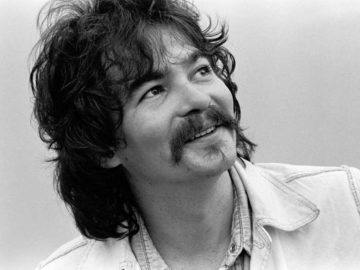
Today I am giving thanks for the life and work of John Prine, the late, great American singer-songwriter, whose date of birth is October 10, 1946, and who died, of COVID-19, on April 7, 2020.
I am listening to his music and thinking about where he came from, and where he wound up: Prine was born in Illinois but his parents were from Kentucky, where he would spend time in his youth visiting family; his career started in Chicago but he ended his days in Nashville, where he co-founded his own independent record label, Oh Boy Records.
I mention these geographical poles in the life of the birthday boy because they help me make sense of my own intimate, visceral response to John Prine’s work. I was introduced to his music in Toronto in the early 1980s by my high-school sweetheart, whose own parents were from Kentucky, having migrated north, to what is effectively Canada’s Midwest, just like Prine’s folks had when they moved to Illinois. (Of course, having done part of his military service in Canada, William Faulkner is said to have noted the similarities between his own native Deep South and America’s ostensibly ur-Yankee neighbor to the north: but that’s another story.) Read more »
All roads lead to Ukraine [war] – Scattered fragments of a [nuclear] memoir
I grew up in the 1950s, at the height of the Cold War. At some point “mutually assured destruction” entered my lexicon. I came to accept the threat of nuclear war with the USSR as something I’d live with until I died (perhaps in a nuclear war?). The Berlin Wall fell in 1989 and two years later the USSR dissolved. With that the possibility of nuclear war decreased, though the weapons themselves remained. Now, thirty years later, nuclear war is, all of a sudden, more likely than at any time in my life since the Cuban Missile Crisis in October of 1962.
I actually do remember the missile crisis, but only vaguely. There is a sense of danger coupled with the image of a grayscale aerial photo, or perhaps a map, of Cuba. But that’s about it. Beyond that, I certainly had a strong sense of persisting conflict between the Soviet Union and American, plus the Free World. The the number and destructive power of nuclear warheads controlled by each side – the so-called missile gap – was a constant concern. Magazines such as Popular Science and Mechanix Illustrated regularly carried features about the design, construction, and provisioning of home fallout shelters.

I have a vague sense of one day being in the basement in the TV room and telling my father, “don’t worry, if I’m drafted, I’ll go.” But I can’t recall just what prompted that remark, perhaps a news story about draft resisters. That was before I went off to college. I turned 18 during my junior year and had to register with Selective Service. I was given a student deferment. A year later a draft lottery was instituted and I drew the number 12 in the lottery. I was certain to be drafted once I graduated. By that time I had been actively protesting against the Vietnam War for four years and did not want to be drafted to fight a morally abhorrent war.
I decided to apply for status as a conscientious objector, which would exempt me from military service but require that I perform some kind of alternative civilian service. I sought legal advice through the American Friends Service Committee, a Quaker organization committed to social justice and peace. I worked with one of their lawyers in preparing my application, which was successful. I was assigned to work in the Chaplain’s Office at Johns Hopkins. Chester Wickwire, the chaplain, had been active in both the Civil Rights and anti-war movements, and was able to get two local congressmen to write letters of support. When my term of service was over, 1972 or 1973, I went off to graduate school. Read more »
Monday Photo
Campaigning on Covid
by Marie Snyder
I’m running for an elected position: school board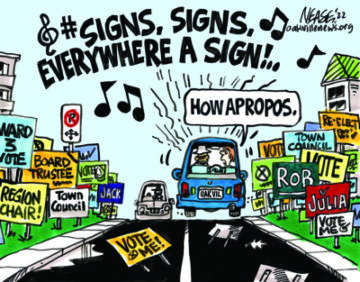 trustee. It’s a relatively minor position and non-partisan, so there’s no budget or staff. There’s also no speeches or debates, just lawn signs and fliers. Campaigning is like an expensive two-month long job interview that requires a daily walking and stairs regimen that goes on for hours. Recently, some well-meaning friends who are trying to help me win (by heeding the noise of the loudest voices) cautioned me to limit any writing or posting about Covid. It turns people off and will cost me votes. I agreed, but then had second thoughts the following day, and tweeted this:
trustee. It’s a relatively minor position and non-partisan, so there’s no budget or staff. There’s also no speeches or debates, just lawn signs and fliers. Campaigning is like an expensive two-month long job interview that requires a daily walking and stairs regimen that goes on for hours. Recently, some well-meaning friends who are trying to help me win (by heeding the noise of the loudest voices) cautioned me to limit any writing or posting about Covid. It turns people off and will cost me votes. I agreed, but then had second thoughts the following day, and tweeted this:
I’ve been cautioned not to tweet so much about covid because it could cost me votes. But we’re sleepwalking through a crisis that could be averted if we can just open our eyes to it. Hospitalizations and deaths are way higher now than this time in the previous two years.
Protecting kids by possibly saying that one thing that finally lights a fire under chairs to #BringBackMasks is far more important to me than winning a popular vote. Look at young people dropping dead from strokes! The pandemic didn’t end. We’re not easing out of it. We’re in the thick of it. But it appears that some people in power want you at work and going to restaurants and bars and travelling more than they care to prevent children getting sick and hospitals overflowing.
There are variants that bypass vaccines. A well-fitting N95 can stop all variants. And CR boxes filter all variants. If we #BringBackMasks then more of us stand a fighting chance at avoiding getting this repeatedly, accumulating risk factors for brain damage or strokes. Masks don’t stop us from living; Covid does.
I closed my laptop to avoid reading the expected onslaught from haters, but, once I mustered the courage to look, found incredible support instead. Hundreds of new people followed me, and my email was suddenly full of donations and requests for signs. That one tweet appeared to do more than weeks of walking door to door. Read more »
How Civilization Inevitably Gives Rise to a “Battle between Good and Evil”
by Andrew Bard Schmookler
In the previous piece in this series, “The Discernible Reality of a ‘Force of Evil’,” I attempted to show that there is a Force – visibly operating in the world — that can reasonably be called a “Force of Evil.” (With “Evil” defined as “a coherent force that consistently works to make the human world worse.” Or, that “consistently spreads a pattern of brokenness.”)
We can see this Force, I argued, by exploring the connections in “the dense network of cause and effect.” Those connections reveal how the various elements in the human world that are life-degrading – war, injustice, hatred, greed, cruelty, trauma, intrapsychic conflict, etc. – are each both the causes and the effects of one another.
Those connections, in other words, reveal the general truth that “Brokenness Begets Brokenness.” And from that reality – of how brokenness moves through the human world over time in shape-shifting ways — we can infer the existence of a Force that consistently moves a “pattern of brokenness” through the human world, consistently making the human world worse.
This Force — transmitting that “pattern of brokenness” – is something we can see, I said, “the way we ‘see’ the wind in the swaying of the trees and the flapping of the clothes on the line.”
What we see – “a coherent force that consistently makes things worse in the human world” – is something that reasonably be called “a Force of Evil.” And – as it can be discerned by applying reason to evidence – the existence of such a force should be incorporated into the worldview of our secular culture. Read more »
Monday, October 3, 2022
Quodlibet: Bach’s Liberty, and Ours
by David Oates
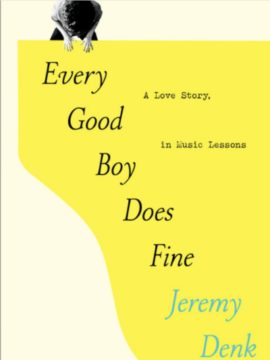 Before leaving Santa Fe I spent (yet another) morning at a coffeehouse. It’s an urban sort of behavior, and a Bachian one too – you might know about Zimmerman’s in Leipzig, the coffeehouse where Bach brought ensembles large and small to perform once a week. It seems to have been a chance to make some non-liturgical music, a relief from Bach’s otherwise very churchy employment.
Before leaving Santa Fe I spent (yet another) morning at a coffeehouse. It’s an urban sort of behavior, and a Bachian one too – you might know about Zimmerman’s in Leipzig, the coffeehouse where Bach brought ensembles large and small to perform once a week. It seems to have been a chance to make some non-liturgical music, a relief from Bach’s otherwise very churchy employment.
I sat in a corner where I could see but hardly be seen. My book on this day was Jeremy Denk’s recent memoir Every Good Boy Does Fine. My what a writer. And what a pianist! I was having a lot of fun, in my bookish way.
It led to a surprising interaction, a brief conversation about art and music with the young woman clearing and wiping the little café table next to mine. Pretty, with long dark hair. Friendly and open – “What are you reading,” she surprised me, but in a good way. I showed her the cover, explained about my amateur piano-playing, Denk’s twofold talent. She responded with an anecdote about Salvador Dali. And that, with smiles, was our interaction. Two humans, two minutes.
I spend a lot of time on my own, and I’m happy that way. But sometimes I really feel kindness when it is offered. A smile, a word. And it surprises me how much warmth that can create.
Then she cleared the wee table two over from me, where two possibly homeless gray-haired people had been sitting. A man and a woman, some kind of couple; they were given breakfast plates involving big waffles. I wondered if these were “comped” by the staff. No way to know, and I shouldn’t guess. They were so alike, this couple, they could have been twins: both diminutive, with neat active bodies and excellent long hair woven under practical caps or hair-bands above weathered faces. Impossible to age: Forty? Seventy? A few hundred?
But the man soon ramped up into a loud ranting voice, declaiming violently to or at his apparent partner. She sat motionlessly, strategically I thought: as if she knew which words would come to nothing, which to blows. Read more »
Creationism in the service of climate change denial
by Paul Braterman

Young Earth creationist organisations are united in rejecting the secular science of climate change. This science, they say, incorporates the study of positive feedback loops as demonstrated by data from Ice Age cores (true). But all of this is part of the secular science that regards the Earth as ancient (also true) and is therefore unsound (no comment). The creationist organisations are left with the task of explaining the Ice Ages, which they do with a degree of ingenuity worthy of a better cause. This in turn leads to a creationist climate science, in which positive feedbacks are ignored. It follows that conventional climate science can be discarded, and our current concerns rejected as alarmism.
This conclusion fits in well with the aims of the right-wing organisations with which the creationists are intertwined. One frequent commentator on environmental matters in Answers in Genesis is Calvin E. Beisner, founder and CEO of the Cornwall Alliance for the Stewardship of Creation, which exists to oppose any environmental constraints on industry, and Beisner’s work has been praised by the Heritage Foundation and the Heartland Institute. The Cornwall Alliance itself is deeply linked to creationist theology, and its Statement of Faith commits to separate creation of a historical Adam and Eve, original sin as a historical fact, and “the bodily resurrection of the just and unjust, the everlasting punishment of the lost, and the everlasting blessedness of the saved.” The conservative commentator Jay W. Richards, Senior Fellow of the evolution-denying Discovery Institute, is a Fellow of Heartland and a former adviser to Cornwall. But the political agenda of creationist organisations is a major topic in itself, to which I shall return.
We must also remember that while there is no commercial interest in denying evolution, denying the need for action on climate is a well-funded industry, to whose voluminous output the creationist climate change deniers have full access. Read more »
White Castles and the Ivory Tower: Is Cheating at Chess Evidence of Cheating at Chess?
by Steven Gimbel and Gwydion Suilebhan
 At a recent tournament sponsored by the St. Louis Chess Club, 19-year old Hans Niemann rocked the chess world by defeating grandmaster Magnus Carlson, the world’s top player. Their match was not an anticipated showdown between a senior titan and a recognized rising phenom. The upset came out of nowhere.
At a recent tournament sponsored by the St. Louis Chess Club, 19-year old Hans Niemann rocked the chess world by defeating grandmaster Magnus Carlson, the world’s top player. Their match was not an anticipated showdown between a senior titan and a recognized rising phenom. The upset came out of nowhere.
Throughout the chess world, whispers about Niemann’s improbable victory led to social media posts with rampant speculation about foul play until Carlson, in his own post, directly accused Niemann of cheating. In support of that claim, he advanced several pieces of evidence. First, Carlson claimed that the trajectory of Niemann’s progress as a player was “unusual.” Second, he suggested that during their match, Niemann exhibited a lack of mental focus that didn’t correspond with his surprisingly effective play.
“I had the impression,” Carlson tweeted, “that he wasn’t tense or even fully concentrating on the game in critical positions, while outplaying me as black in a way I think only a handful of players can do.”
Carlson’s third piece of purported evidence, however, has been the most rhetorically effective: Niemann’s prior history of cheating. The 19 year-old has admitted to illicit play twice earlier in his career. “I was 16 years old and living alone in New York City at the heart of the pandemic,” Niemann said in an interview with the St. Louis Chess Club, “and I was willing to do anything to grow my stream. What I want people to know about this is that I am deeply, deeply sorry for my mistake. I know my actions have consequences and I suffered those consequences.”
Niemann insists that he learned from his error and has changed. Read more »
Attention, Please!
by Chris Horner
 They all want it: the ‘digital economy’ runs on it, extracting it, buying and selling our attention. We are solicited to click and scroll in order to satisfy fleeting interests, anticipations of brief pleasures, information to retain or forget. Information: streams of data, images, chat: not knowledge, which is something shaped to a human purpose. They gather it, we lose it, dispersed across platforms and screens through the day and far into the night. The nervous system, bombarded by stimuli, begins to experience the stressful day and night as one long flickering all-consuming series of virtual non events.
They all want it: the ‘digital economy’ runs on it, extracting it, buying and selling our attention. We are solicited to click and scroll in order to satisfy fleeting interests, anticipations of brief pleasures, information to retain or forget. Information: streams of data, images, chat: not knowledge, which is something shaped to a human purpose. They gather it, we lose it, dispersed across platforms and screens through the day and far into the night. The nervous system, bombarded by stimuli, begins to experience the stressful day and night as one long flickering all-consuming series of virtual non events.
The result is that we find it hard to focus, to concentrate on one thing for longer than about 3 minutes. The repeated dispersal of attention, the iterated jumps and clicks of the wired individual making it harder to gather our dispersed attention in order to do anything like genuine contemplation or the relaxed appreciation of what we view or hear. It’s a familiar complaint: the spaces of leisure that might once have been the beyond the reach of of work, of consumption and gossip, are erased.
I want to suggest a few things here. One is that something has gone strangely awry with the possibilities of leisure, another that there is an existential problem that is connected to the diversion and dispersal of desire. Finally, that there are some important things the subject of all this digital attention needs to do, and that that is more than just disconnecting (although that might be a good idea too). Read more »


